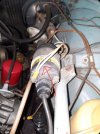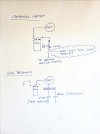heyelisaa
Platinum Level Sponsor
Hello,
I recently swapped the coil out with a Pertronix one, and everything works great...but there is one wire from the original set up that I can't figure out the purpose of. Does anyone know what the larger 12ga white wire, in the attached photo, could be serving? Any ideas would be much appreciated!
Thanks!
I recently swapped the coil out with a Pertronix one, and everything works great...but there is one wire from the original set up that I can't figure out the purpose of. Does anyone know what the larger 12ga white wire, in the attached photo, could be serving? Any ideas would be much appreciated!
Thanks!


